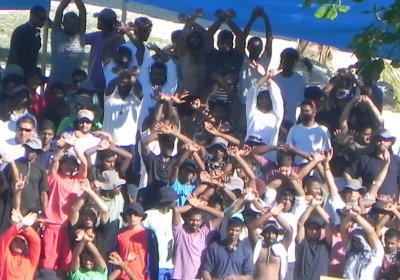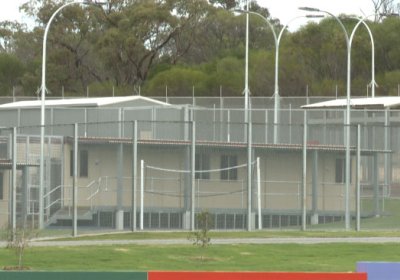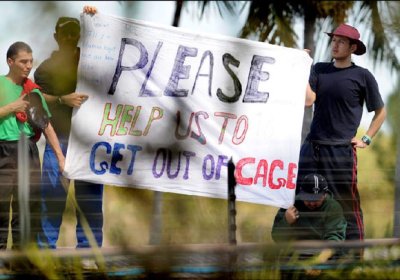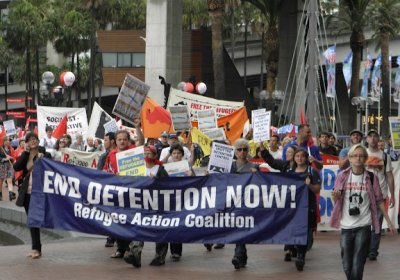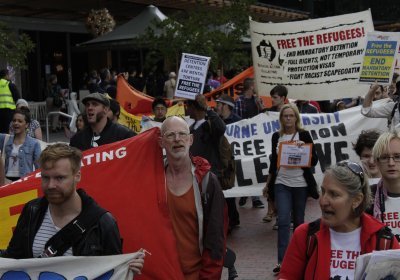This month is the start of the wet season on the tiny island of Nauru, where more than 370 refugees are being detained in Australian army tents that leak and do nothing to keep mosquitoes out.
In these appalling conditions, more than 300 men are refusing food and some are refusing water in a bid to have the department of immigration hear their claims for asylum.
That’s right — people that came to Australia exercising their legal and moral right to seek protection are on a hunger strike because the Australian government has decided to make an example of them.
mandatory detention
The newly opened Yongah Hill detention centre in remote Western Australia is “probably one of the most secure facilities in the entire network,” immigration media manager Sandi Logan said on June 25.
The new detention centre is about 90 kilometres north-east of Perth, about five kilometres outside the rural town of Northam. The $125 million centre was a disused army barracks and will house up to 600 male asylum seekers.
It is now fitted with electric fences, “scale-proof” walls, cameras and bars on most windows, said an AAP reporter who visited the site.
The near-continuous introduction, change and reversal of several federal government policies on asylum seekers arriving by boat have had a severely damaging effect on refugees held in the Northern Immigration Detention Centre in Darwin.
An Iranian man who arrived on Christmas Island just after the government announced it would “swap” 800 asylum seekers in Australia for 4000 refugees from Malaysia, said he was told every day he would be deported. “It was the worst two months of my life.”
Historically, racism has given rise to the belief that different human populations possess different capacities, some superior and some inferior, based on aspects such as cultural traits and genetic makeup.
At its crudest, racist views often hold that genetic makeup can imply specific traits and
characteristics, and has been used as a tool to separate people in our society.
This kind of view became widespread across the world, justifying crimes such as the mass enslavement of Africans, the genocide committed by the Nazis, and the “white Australia” policy, initiated in 1901.
Refugee rights activists representing groups and individuals from Darwin, Melbourne, Brisbane, Perth, Canberra, Wollongong, Sydney, and the Blue Mountains met on December 3 to plan campaign activities for this year.
It was the first national gathering of refugee rights campaigners since federal Labor's 2007 election, and fittingly occurred on the same weekend as the ALP's national conference. Labor further entrenched its anti-refugee policies, in particular offshore processing.
The situation inside every one of Australia’s refugee detention centres has grown dangerously volatile.
Just days after the Christmas Island breakout and subsequent protests, nine refugees climbed on the roof of a detention centre in Darwin after watching the assault of another refugee on March 15.
Two days later, a 20-year-old Afghan man hanged himself with a bedsheet at the Scherger detention centre after his refugee application was rejected.
Federal immigration minister Chris Bowen announced plans for a new 1500-bed detention facility on March 3. It is to be located at Wickham Point, an industrial area 35 kilometres south-east of Darwin.
The March 4 NT News said the Darwin Airport Lodge, which currently houses refugees, would also be expanded by 400 beds.
This would bring Darwin’s total detention capacity to 2900, making the city the largest detention location on the mainland — larger even than the notoriously overcrowded Christmas Island facility.
- Previous page
- Page 3
